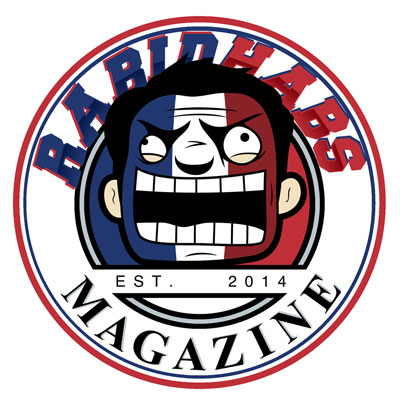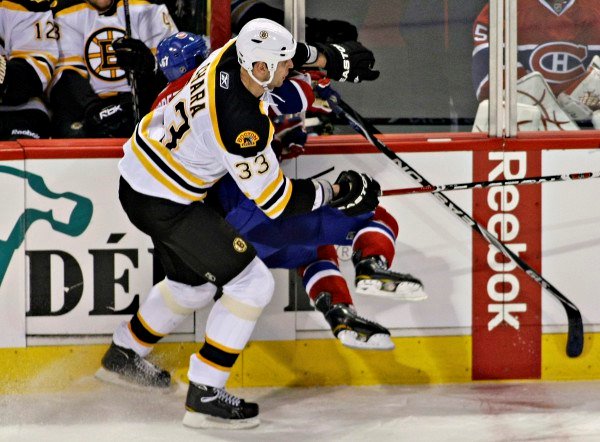
 Jessica-Lyn Saunders
Rabid Habs
Jessica-Lyn Saunders
Rabid Habs
58
Reads
0
Comments
Does The NHL Really Care About Head Trauma?

Michael Benoit donated late professional wrestler and son Chris Benoit‘s brain to West Virginia University, where the head of neurosurgery and former Pittsburgh Steelers team physician, Julian Bailes believed that years of trauma to the head may had led to Benoit’s double-murder and suicide, in which over a three day period he killed his wife Nancy and his seven-year-old son Daniel before hanging himself. The results at the university showed that Benoit’s brain was so severely damaged it resembled the brain of an 85-year-old Alzheimer patient, as well as showing that Benoit had an advanced form of dementia similar to the brains of four retired NFL players who had suffered multiple concussions, sank into depression, and harmed themselves or others.
While Chris Benoit was never a part of the National Hockey League, concussions are still concussions in any sport and according to Bailes and his colleagues, they concluded that repeated concussions can lead to dementia, which can contribute to severe behavioral problems.
Hockey players suffer more concussions than we know of. According to Sheryl Ubelacker of The Canadian Press, who wrote an article for the Huffington Post on hockey player concussions in January of 2013, a study which followed players on two Canadian university teams during the 2011-2012 season, found the incidence of concussions was three times higher in males and more than five times greater in females than most previous research had found. Five of the 25 male players and six of the 20 females sustained concussions during the season, and one of them experienced a second brain trauma in a subsequent game.
While the NHL decided to stiffen Rule 48, which limits the scenarios under which hits to the head can be deemed legal back in 2012, it’s surprising that the punishment for a blow to the head is more so a slap on the wrist, considering the NHL’s violent game play costs the league $200M a year according to a Canadian-led research presented to the American Academy of Opthalmology. And while league commissioner Gary Bettman was roasted for his comments on how there was “no evidence yet” that concussions “necessarily” lead to CTE that had been detected in the brains of several former players who had taken their own lives, the fact that Bettman had an argument towards the 60 hockey retirees who were suing the NHL over the fact that they did not do enough to protect them from head injuries makes you wonder if the league actually cares about their players’ safety.
A good example of this would be March 8th, 2011, when the Boston Bruins were playing in Montreal. Defenseman and captain Zdeno Chara body-checked Habs forward Max Pacioretty into the boards, which ended up leaving Pacioretty laying on the ice before being wheeled away on a stretcher. While the Montreal police did investigate the incident that left Pacioretty with a broken vertebra, no charges were put on Chara which sparked an angry debate over the NHL’s policy on serious injuries, with Canadian Prime Minister Stephen Harper calling on the league to assess the “growing number” of serious injuries and head shots. Pacioretty is known for his super speed when it comes to healing from injuries with some fans giving him the nickname “Wolverine” but despite having the ability to heal fast, there was still neglect with Bettman once again arguing that the rise in reported concussions is due to accidental events and collisions, not head hits.
An editorial in the Canadian Medical Association Journal back in 2011 urged for there to be a fighting ban in hockey, with studies from the Boston University School of Medicine showing that Chronic traumatic encephalopathy, a degenerative brain disease that causes memory problems, changes in personality and mood, Parkinson-like symptoms and changes in speech and gait was shown in the brains of prominent hockey players Rick Martin, Reggie Fleming and Bob Probert. However, fighting has always been a part of the “thrill” and “excitement” of the game, so begging the league to ban something that brings in more viewers and money is like begging Abba to get back together despite them saying they never would. It’s just not happening.
What can be done to protect more players even though all too often officials are making judgement calls as well as the NHL Department Of Player Safety instead of implementing real suspensions and taking a long hard look at how they patrol the game is a question that needs to be answered. We asked a few fans what they think could be done to protect the players as well as helping them during their recovery from their injuries. Here are some of their responses:
@EarlxGreat suspensions with teeth.
— The Bouch (@PaulRBouchard) August 21, 2015
@EarlxGreat Enforcers can protect their star players, but as for the other make the shoulder and elbow pads a little bit smaller
— Tyler (@TV_Muscle) August 21, 2015
@EarlxGreat I wonder if a shorter term “Concussion IR” similar to baseball’s 7-day Disabled List for concussions would be beneficial…
— GeoFitz (@GeoFitz4) August 21, 2015
@EarlxGreat Even more so if it was more like LTIR and provided short term cap relief…
— GeoFitz (@GeoFitz4) August 21, 2015
When it comes to fighting in the NHL, a ban on fighting all together is considered illogical, but as Patrick Helper from Fansided’s “Too Many Men On The Ice” put it, “In order for things to improve players need to start caring and feeling the hits. Yes, they need to feel what they are doing. Right now a player can skate at 20MPH and hit another player without feeling so much as a bump. Maybe it’s time for the NHL and the equipment makers to sit down and figure out how to start cutting down on padding. If a player feels the hit and is sore from it they will be less likely to deliver an unnecessary check. That would in no way take real check and hits out of the game, but hitting from behind and the cross ice.”
Follow Jessica-Lyn on Twitter: @EarlxGreat
Popular Articles

















































 Blackhawks Chicago
Blackhawks Chicago Panthers Florida
Panthers Florida Penguins Pittsburgh
Penguins Pittsburgh Rangers New York
Rangers New York Avalanche Colorado
Avalanche Colorado Kings Los Angeles
Kings Los Angeles Maple Leafs Toronto
Maple Leafs Toronto Bruins Boston
Bruins Boston Capitals Washington
Capitals Washington Flames Calgary
Flames Calgary Oilers Edmonton
Oilers Edmonton Golden Knights Vegas
Golden Knights Vegas Senators Ottawa
Senators Ottawa Lightning Tampa Bay
Lightning Tampa Bay Flyers Philadelphia
Flyers Philadelphia Islanders New York
Islanders New York Sabres Buffalo
Sabres Buffalo Red Wings Detroit
Red Wings Detroit Devils New Jersey
Devils New Jersey Hurricanes Carolina
Hurricanes Carolina Blue Jackets Columbus
Blue Jackets Columbus Predators Nashville
Predators Nashville Stars Dallas
Stars Dallas Jets Winnipeg
Jets Winnipeg Wild Minnesota
Wild Minnesota Blues St. Louis
Blues St. Louis Mammoth Utah
Mammoth Utah Sharks San Jose
Sharks San Jose Ducks Anaheim
Ducks Anaheim Canucks Vancouver
Canucks Vancouver








